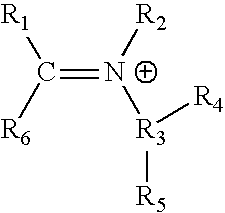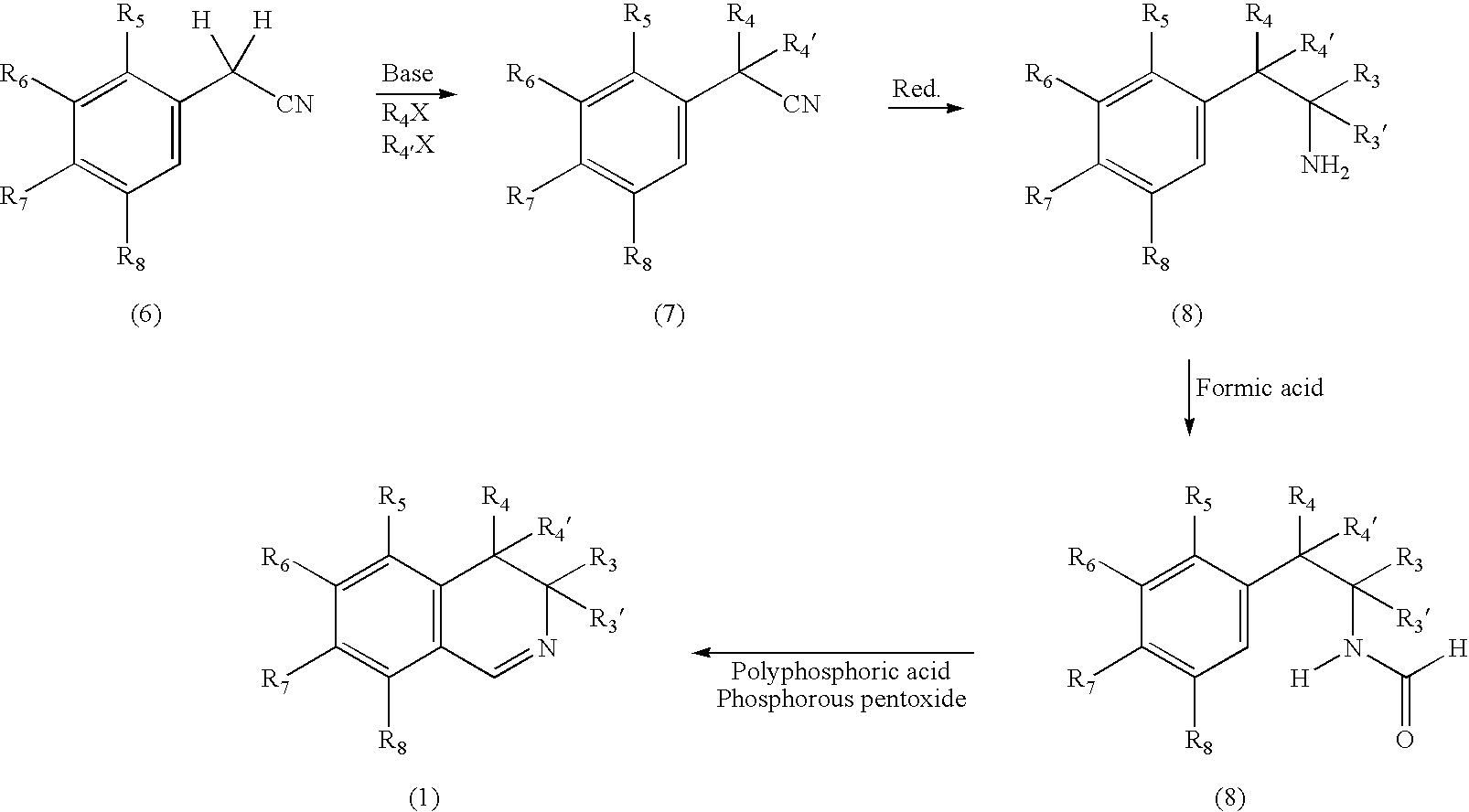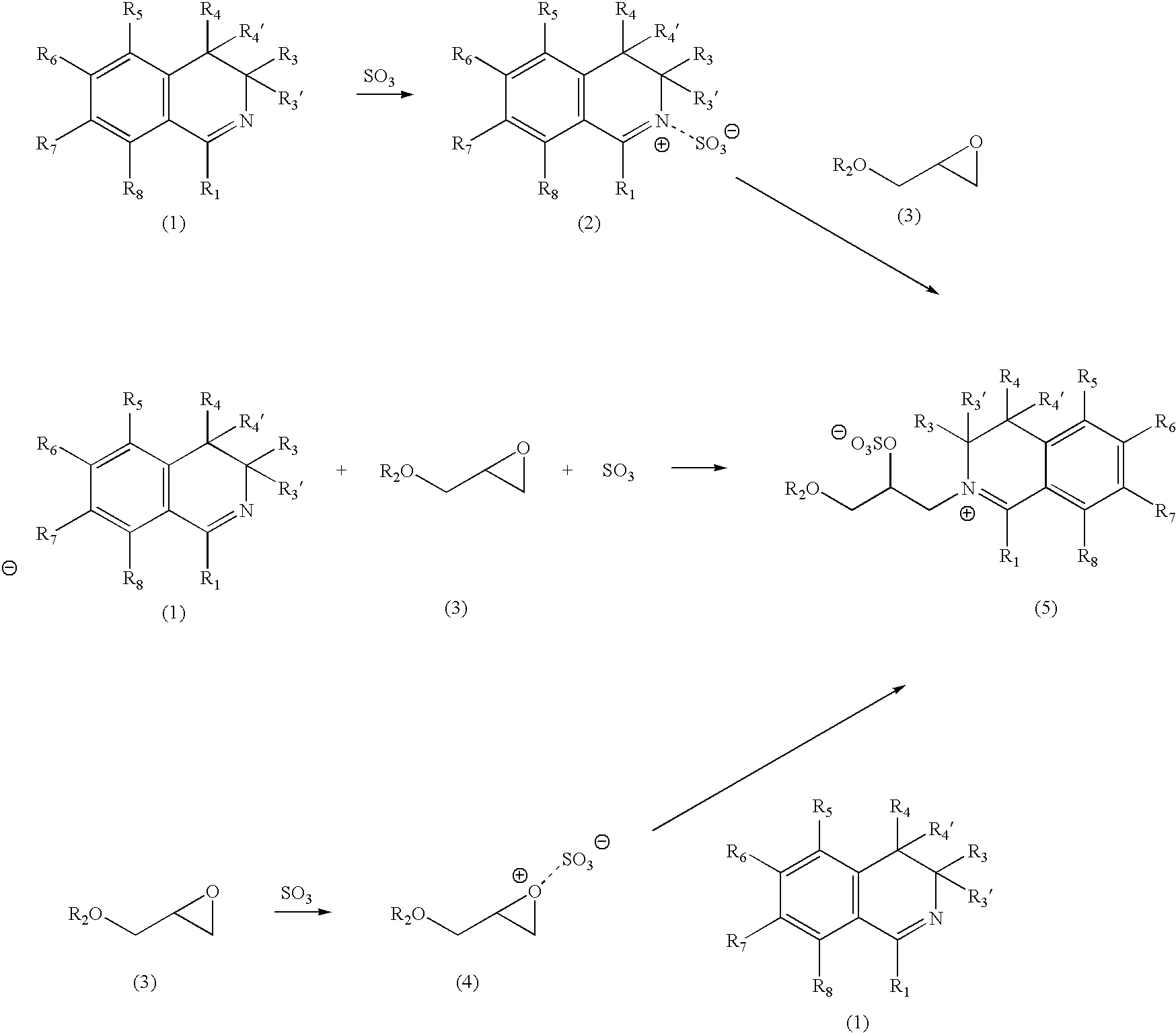Process of producing an organic catalyst
a technology of organic catalysts and catalysts, applied in the direction of organic-compound/hydride/coordination complex catalysts, physical/chemical process catalysts, detergent compounding agents, etc., can solve the problems of time-consuming and expensive processes, extreme temperature rate dependence of agents
- Summary
- Abstract
- Description
- Claims
- Application Information
AI Technical Summary
Problems solved by technology
Method used
Image
Examples
example 1
Preparation of 3,4-dihydroisoquinoline (1, R1, R3, R3′, R4, R4′, R5, R6, R7, R8=H)
[0114] To a flame dried 1000 ml three neck round bottomed flask, equipped with an addition funnel, dry argon inlet, magnetic stir bar, thermometer, Dean Stark trap, and heating bath is added 2-phenethylamine (8, R3, R3′, R4, R4′, R5, R6, R7, R8=H) (121 gm., 1.0 mol) and toluene (250 ml). To the addition funnel is added formic acid (46 gm., 1 mol). The formic acid is added slowly to the stirring reaction solution over 60 minutes and solids form. Once addition is complete the reaction is brought to reflux and water removed via a Dean Stark trap. Once the reaction is complete, the toluene is removed and the product (9, R1, R3, R3′, R4, R4′, R5, R6, R7, R8=H) is purified by vacuum distillation. Formamide (9, R1, R3, R3′, R4, R4′, R5, R6, R7, R8=H) is then contacted with polyphosphoric acid (747 gm) / phosphorous pentoxide (150 gm), using standard Bischler / Napieralski conditions, at 170° C. for 18 hours. Th...
example 2
Preparation of 3,4-dihydro-7-methyl-isoquinoline (1, R1, R3, R3′, R4, R4′, R5, R6, R8=H; R7=CH3)
[0115] Reaction is carried out as Example 1, except 2-(p-tolyl)ethylamine is substituted for 2-phenethylamine.
example 3
Preparation of 3,4-dihydro-4,4-dimethyl-Isoquinoline (1, R1, R3, R3′, R5, R6, R7, R8=H; R4, R4′=CH3)
[0116] To a flame dried 1000 ml three neck round bottomed flask, equipped with a dry argon inlet, magnetic stir bar, and thermometer, is added benzyl cyanide (6) (117 gm., 1.0 mol) and tetrahydrofuran (500 ml). To the reaction is slowly added potassium carbonate (2 mol) over one hour. Once addition is complete the reaction is stirred at room temperature for 1 hour. To the reaction is added methyl bromide (2 mol) and the reaction is stirred at room temperature for 18 hours. The reaction is evaporated to dryness, residue dissolved in toluene and washed with 1N HCl. Organic phase is dried with Na2SO4, filtered and evaporated to yield crude nitrile (7, R5, R6, R7, R8=H; R4, R4′=CH3). Crude nitrile is reduced using borane-THF complex (1 equiv.) at room temperature for 18 hours. Once reaction is complete ethanol (50 ml) is added, and the reaction is evaporated to dryness. Once dry, the re...
PUM
| Property | Measurement | Unit |
|---|---|---|
| temperature | aaaaa | aaaaa |
| weight percent | aaaaa | aaaaa |
| pressure | aaaaa | aaaaa |
Abstract
Description
Claims
Application Information
 Login to View More
Login to View More - R&D
- Intellectual Property
- Life Sciences
- Materials
- Tech Scout
- Unparalleled Data Quality
- Higher Quality Content
- 60% Fewer Hallucinations
Browse by: Latest US Patents, China's latest patents, Technical Efficacy Thesaurus, Application Domain, Technology Topic, Popular Technical Reports.
© 2025 PatSnap. All rights reserved.Legal|Privacy policy|Modern Slavery Act Transparency Statement|Sitemap|About US| Contact US: help@patsnap.com



